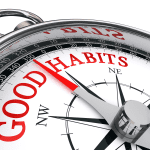 I have a love/hate relationship with August, how about you? On the one hand it signifies the ending of the summer (hate) and the transition to cooler weather (which I am welcoming after the hot, hazy, and humid, summer we have had in the northeast – love) but also that transition back to “normal”. Normal as in back to school for the kids and back to your more typical routine and schedule if your schedule has been different during the summer. Do you embrace change or try to run from it?
I have a love/hate relationship with August, how about you? On the one hand it signifies the ending of the summer (hate) and the transition to cooler weather (which I am welcoming after the hot, hazy, and humid, summer we have had in the northeast – love) but also that transition back to “normal”. Normal as in back to school for the kids and back to your more typical routine and schedule if your schedule has been different during the summer. Do you embrace change or try to run from it?
Transitions
These transitions, are a normal part of life, and can elicit both excitement and/or fear and anything in between. Excitement, even though it is for something good, (new home, job, baby) can often bring up fears from the past. The most common fears are the fear of the unknown, the fear of repeating past failures, or self-doubt in your abilities, all of which can increase your stress level.
Through coaching, many of my clients have been able to focus on the things they can control, rather than the fears that they really have no control over. They can begin to embrace change with a more positive outlook, and see it as an opportunity for growth and learning. This increased belief in themselves also builds their resilience and develops their agency.
How to Navigate a Transition
Let’s focus on the things you do have control over. This goes for your children as well. Many of them may experience the same fears as mentioned based on last years’ school experience. Moving to a new school can also bring out the fear of the unknown and some self-doubt about their abilities. These fears, whether realistic or not, should still be accepted rather than dismissed. Together you can explore them more thoroughly to see if they are based in reality or not. Using yourself as an example can help your children see that questioning our abilities is natural, but that by being proactive we can build those skills needed to feel more in control.
Navigating Transitions
-
- Set clear goals – what do you want from this change? How can you turn it into a positive rather than focusing on the negative? Now figure out what you need to do, have or be to get that? Break it down into small manageable steps so that you can see the path to get there.
-
- Prepare ahead – if this transition involves a change in schedule, start now to practice. Does your bedtime need to change? Start setting an alarm to get up at the time you will need to. (This is also good to get kids in the habit of getting up – on their own).
-
- Organize your environment – can you find what you need, when you need it (quickly)? Is your home easy to navigate or do you need to clear the table off before you can eat there? Are you using up energy moving things, or searching for things? Take some time before the transition to help “future you” feel more in control. How about your child’s study space: where is it and is it organized and distraction free?
-
- Create routines – routines provide structure to your day and help to take some of the strain off of your brain as they become automatic. We all learned how important structure is during the pandemic when it all went away. Routines save brain bandwidth and decision-making power to be used for more important things in your day. Creating morning, evening and homework routines for the whole family, sets clear expectations and helps your children develop agency and independence.
-
- Manage Time/Self – We can’t really “manage” time but we can become more aware of it and how we use it or waste it. Do you often feel like you have too much to do and not enough time to do it? Take a look and see what is getting in the way. Are you forgetting things because they were not written down or you lost the sticky it was on? Then maybe it is time to create a new system that will work for you. Planners, phones, index cards, notebooks, mind maps, or bullet journals, it doesn’t matter as long as you will use it. We can no longer keep our to do list in our heads (even though it should only have 3-5 tasks on it). One distraction can erase it from our working memory. You need something that works for today, but also something that holds your tasks, thoughts and ideas that are not for today. Ways to manage your tasks can be batching similar tasks together, using a Pomodoro technique approach, delegating or delaying. Lastly, managing your distractions, keeping an eye on an analog clock, and focusing on one priority at a time can help you get more of the important things done.
-
- Cultivate Resources – Making sure you have resources for support and help as well as, resources that help you relax and reduce stress. What are the activities that recharge you? How can you use these resources for this new transition? Who can help you when you are feeling overwhelmed, are stuck or don’t understand something? Create a list for these as in the moment, it can be difficult to come up with something that will help.
-
- Celebrate – We often focus on the negative, like those things we didn’t get done, rather than taking time to celebrate the wins, no matter how small. Take time and rejoice in your achievements and how you handled the transition and it may just increase your motivation and confidence for what’s next.
These seven steps can help make any transition easier because they help “future you” be less stressed and feel more in control. Help your children with these steps as they get ready for a new start this fall. You can make this your family’s best year yet!






 Music is everywhere. Sometimes we hear it and sometimes we don’t. You may suddenly realize you have a “tune” stuck in your head and have no idea that it was playing in the store you just left. Students can now bring their music to school and use it while they work independently.
Music is everywhere. Sometimes we hear it and sometimes we don’t. You may suddenly realize you have a “tune” stuck in your head and have no idea that it was playing in the store you just left. Students can now bring their music to school and use it while they work independently.
 There is so much to think about as the new school year begins. With the pandemic continuing, each town has devised its own plan for what “school” will look like this fall. For some that may include half or full days, or a combination of two days in school and three remote or every other day or every other week. So many options, I cannot begin to cover them all. However, many of the schools are starting two weeks later than usual. Don’t let that fool you. It’s time to get organized! Where to begin?
There is so much to think about as the new school year begins. With the pandemic continuing, each town has devised its own plan for what “school” will look like this fall. For some that may include half or full days, or a combination of two days in school and three remote or every other day or every other week. So many options, I cannot begin to cover them all. However, many of the schools are starting two weeks later than usual. Don’t let that fool you. It’s time to get organized! Where to begin? each subject on your device. Create a reminder for turning assignments in as that is often a step that can easily get missed. If you have a way to track what is passed in, then if it “gets lost” you have proof. Move the chargers to your new space so that your equipment does not have to be moved to be charged. Turn notifications off by putting privacy settings on while you are doing your homework. You can spend all night working or you can get it done effectively and have some well-deserved downtime for yourself. Which would you rather do?
each subject on your device. Create a reminder for turning assignments in as that is often a step that can easily get missed. If you have a way to track what is passed in, then if it “gets lost” you have proof. Move the chargers to your new space so that your equipment does not have to be moved to be charged. Turn notifications off by putting privacy settings on while you are doing your homework. You can spend all night working or you can get it done effectively and have some well-deserved downtime for yourself. Which would you rather do? To organize yourself, may end up being the most challenging part of this school year. You have an obligation to yourself and your family to do your best to stay healthy. That requires regular health habits including sleep which can be difficult for teens. It will mean keeping your materials clean and switching out your mask daily. Students need to find time to be active, whether it is playing a sport or shooting hoops in the driveway, something that keeps those synapses happy.
To organize yourself, may end up being the most challenging part of this school year. You have an obligation to yourself and your family to do your best to stay healthy. That requires regular health habits including sleep which can be difficult for teens. It will mean keeping your materials clean and switching out your mask daily. Students need to find time to be active, whether it is playing a sport or shooting hoops in the driveway, something that keeps those synapses happy. Science says we all use our brains in three different ways. Although the names applied to these different ways may vary, they each have a specific role to play. Let’s use the terms robot, Yoda and monkey brain.
Science says we all use our brains in three different ways. Although the names applied to these different ways may vary, they each have a specific role to play. Let’s use the terms robot, Yoda and monkey brain. “Together we can” is part of the tagline for the upcoming 2018 Annual International Conference on ADHD (St. Louis) but it struck me that a successful school year is also a matter of working together. The family as a team, educators and support personnel (coaches, therapists, babysitters, etc.) can do so much more when they work together. Here are three essentials for a happy, calm and successful year.
“Together we can” is part of the tagline for the upcoming 2018 Annual International Conference on ADHD (St. Louis) but it struck me that a successful school year is also a matter of working together. The family as a team, educators and support personnel (coaches, therapists, babysitters, etc.) can do so much more when they work together. Here are three essentials for a happy, calm and successful year.



